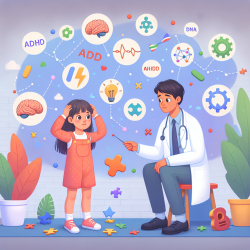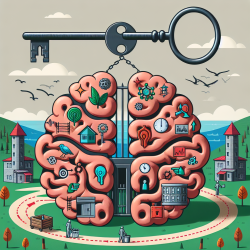Introduction
In the ever-evolving field of speech-language pathology, leveraging real-world data (RWD) can significantly enhance therapeutic outcomes for children. The research article "Lessons on the use of real-world data in medical device research: findings from the National Evaluation System for Health Technology Test-Cases" provides insights that can be applied to our practice at TinyEYE, which offers online therapy services to schools. This blog will explore how practitioners can utilize these findings to improve their skills and encourage further research in speech-language pathology.
Understanding Real-World Data
Real-world data encompasses information collected outside of traditional clinical trials, including electronic health records (EHRs), patient registries, and other healthcare data sources. The research highlights the potential of RWD to support regulatory decision-making for medical devices, a concept that can be translated into the realm of speech-language pathology.
Key Challenges and Strategies
The research identified several challenges in utilizing RWD, such as the lack of unique device identifiers, incomplete data capture, and difficulties in measuring long-term outcomes. However, successful strategies were also highlighted, including:
- Leveraging clinical registries and standardized data models.
- Implementing natural language processing algorithms.
- Utilizing multidisciplinary research teams.
These strategies can be adapted to improve data collection and analysis in speech-language pathology, ensuring more reliable outcomes for children receiving therapy.
Applying Research Insights to Speech-Language Pathology
For practitioners in speech-language pathology, integrating RWD into practice can lead to more informed decisions and better outcomes for children. Here are a few ways to apply these insights:
- Data Standardization: Utilize standardized data models to ensure consistent data capture across different platforms and providers.
- Multidisciplinary Collaboration: Engage with professionals from various disciplines to enhance the depth and breadth of data analysis.
- Technology Integration: Incorporate advanced technologies such as natural language processing to extract meaningful insights from unstructured data sources.
Encouraging Further Research
The findings from the research underscore the importance of continuous exploration and innovation in utilizing RWD. Practitioners are encouraged to engage in further research to uncover new methodologies and technologies that can enhance speech-language pathology practices. By doing so, we can ensure that our therapeutic approaches are grounded in robust, evidence-based data.
Conclusion
The integration of real-world data into speech-language pathology offers a promising avenue for improving therapeutic outcomes for children. By addressing the challenges and adopting successful strategies highlighted in the research, practitioners can enhance their skills and contribute to the advancement of the field. To delve deeper into the original research, please follow this link: Lessons on the use of real-world data in medical device research: findings from the National Evaluation System for Health Technology Test-Cases.










